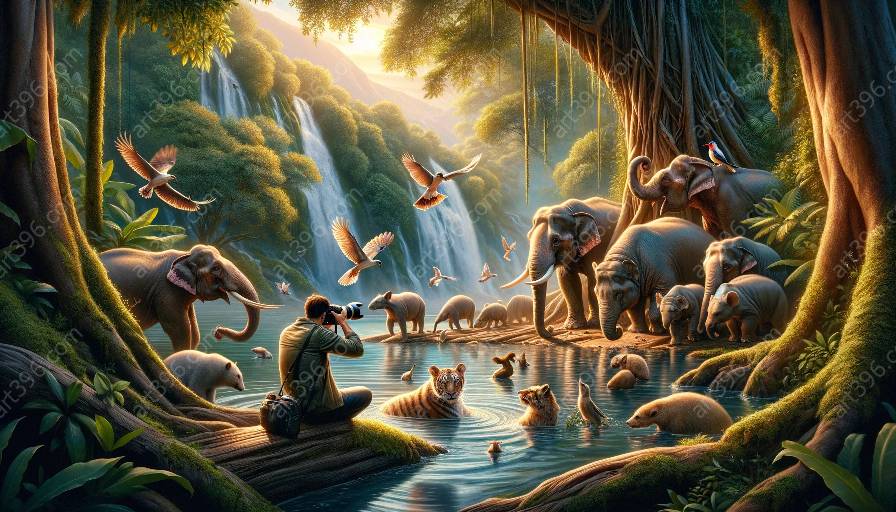Wildlife photography captures the beauty and mystery of our natural world, but it also presents unique challenges for photographers. At the intersection of photographic and digital arts, wildlife photography requires not only technical skills but also a deep understanding of animal behavior and environmental dynamics. In this article, we will explore the psychological and emotional challenges faced by wildlife photographers and how these challenges influence the artistic expression in this captivating realm.
The Inner Struggles of Wildlife Photographers
Wildlife photography demands patience, perseverance, and a profound connection with nature. As photographers immerse themselves in the wilderness, they often face psychological and emotional hurdles that can deeply impact their work.
1. Isolation and Solitude
One of the most significant challenges for wildlife photographers is the inevitable sense of isolation and solitude. To capture authentic moments in the wild, photographers often spend extended periods alone, waiting for the perfect shot. This isolation can lead to feelings of loneliness and introspection, testing the photographer's mental resilience.
2. Frustration and Disappointment
Wildlife behavior is unpredictable, and photographers may endure long stretches of waiting only to miss the desired shot. This repetitive cycle of anticipation and disappointment can be emotionally taxing, causing frustration and self-doubt. Dealing with these emotions while striving for artistic excellence is a central challenge in wildlife photography.
Embracing the Emotional Landscape
While the psychological challenges of wildlife photography are undeniable, skilled photographers learn to channel their emotions into their work, enhancing the depth and authenticity of their images. They develop coping mechanisms and emotional intelligence to navigate the intricate dance between human emotion and the raw nature of the wild.
1. Empathy and Connection
Photographers who deeply understand the behavioral patterns of wildlife develop a sense of empathy and connection with their subjects. This emotional bond enables them to anticipate and capture moments of vulnerability and natural beauty, transcending technical proficiency to create truly compelling images.
2. Resilience and Adaptability
Embracing the unpredictability of the wild, photographers cultivate resilience and adaptability. They learn to embrace failure as an integral part of the creative process and harness their emotional responses to fuel their artistic vision.
The Impact on Artistic Expression
Ultimately, the psychological and emotional challenges of wildlife photography deeply influence the artistic expression of photographers. Through their unique emotional journeys, photographers infuse their work with authenticity, capturing not only the physical appearance of wildlife but also the spirit and emotion of the natural world.
1. Authentic Storytelling
The emotional depth cultivated through the photographer's experiences brings an authentic storytelling dimension to their work. Each image becomes a narrative, conveying the profound connection between the photographer and the wildlife, inviting viewers to immerse themselves in the untamed beauty of nature.
2. Ethical Considerations
Emotional intelligence plays a pivotal role in shaping ethical practices in wildlife photography. Photographers who are attuned to the emotional needs of animals prioritize their subjects' welfare, advocating for respectful and non-intrusive photographic techniques.
Conclusion
Wildlife photography is a compelling combination of technical skill, artistic vision, and emotional resilience. By understanding and addressing the psychological and emotional challenges inherent in this art form, photographers can elevate their work to transcend mere documentation, and truly capture the essence of the natural world.



















































